Hui Tang
Efficient Masked Image Compression with Position-Indexed Self-Attention
Apr 17, 2025Abstract:In recent years, image compression for high-level vision tasks has attracted considerable attention from researchers. Given that object information in images plays a far more crucial role in downstream tasks than background information, some studies have proposed semantically structuring the bitstream to selectively transmit and reconstruct only the information required by these tasks. However, such methods structure the bitstream after encoding, meaning that the coding process still relies on the entire image, even though much of the encoded information will not be transmitted. This leads to redundant computations. Traditional image compression methods require a two-dimensional image as input, and even if the unimportant regions of the image are set to zero by applying a semantic mask, these regions still participate in subsequent computations as part of the image. To address such limitations, we propose an image compression method based on a position-indexed self-attention mechanism that encodes and decodes only the visible parts of the masked image. Compared to existing semantic-structured compression methods, our approach can significantly reduce computational costs.
Adaptive Extensive Cancellation Algorithm and Harmonic Enhanced Heart Rate Estimation based on MMWave Radar
Mar 10, 2025Abstract:Heart rate (HR) monitoring is crucial for assessing physical fitness, cardiovascular health, and stress management. Millimeter-wave radar offers a promising noncontact solution for long-term monitoring. However, accurate HR estimation remains challenging in low signal-tonoise ratio (SNR) conditions. To deal with both respiration harmonics and intermodulation interference, this paper proposes a cancellation-before-estimation strategy. Firstly, we present the adaptive extensive cancellation algorithm (ECA) to suppress respiratory and its low-order harmonics. Then, we propose an adaptive harmonic enhanced trace (AHET) method to avoid intermodulation interference by refining the HR search region. Various experimental results validate the effectiveness of the proposed methods, demonstrating improvements in accuracy, robustness, and computational efficiency compared to conventional approaches based on the FMCW (Frequency Modulated Continuous Wave) system
Respiratory Subtraction for Pulmonary Microwave Ablation Evaluation
Aug 08, 2024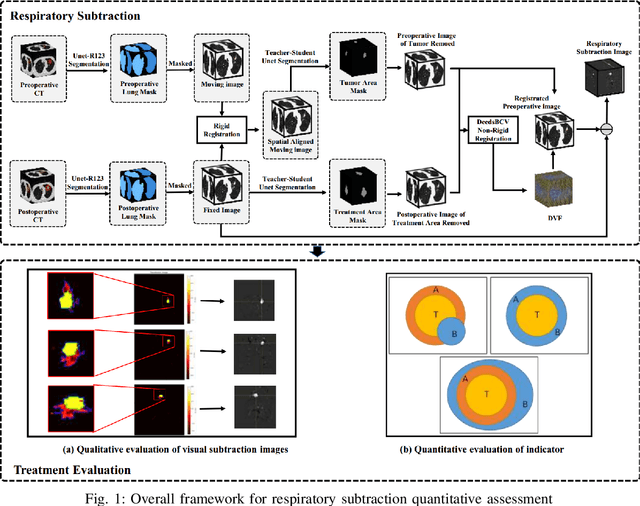
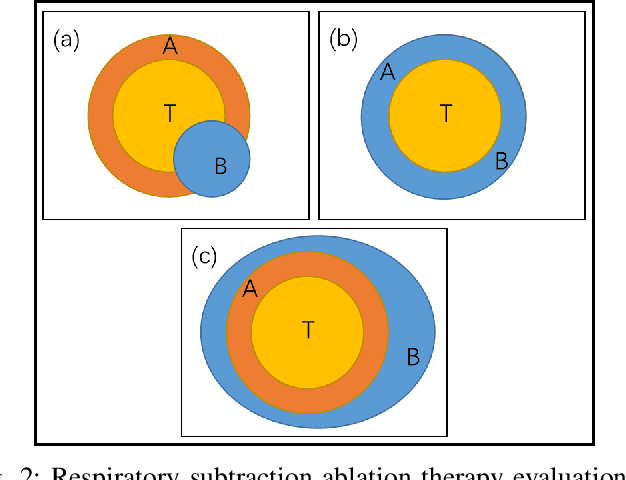
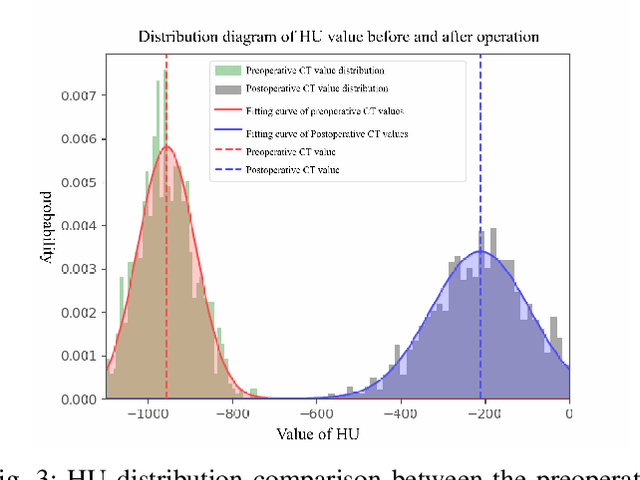
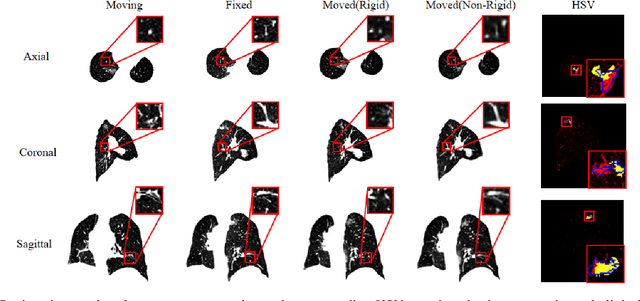
Abstract:Currently, lung cancer is a leading cause of global cancer mortality, often necessitating minimally invasive interventions. Microwave ablation (MWA) is extensively utilized for both primary and secondary lung tumors. Although numerous clinical guidelines and standards for MWA have been established, the clinical evaluation of ablation surgery remains challenging and requires long-term patient follow-up for confirmation. In this paper, we propose a method termed respiratory subtraction to evaluate lung tumor ablation therapy performance based on pre- and post-operative image guidance. Initially, preoperative images undergo coarse rigid registration to their corresponding postoperative positions, followed by further non-rigid registration. Subsequently, subtraction images are generated by subtracting the registered preoperative images from the postoperative ones. Furthermore, to enhance the clinical assessment of MWA treatment performance, we devise a quantitative analysis metric to evaluate ablation efficacy by comparing differences between tumor areas and treatment areas. To the best of our knowledge, this is the pioneering work in the field to facilitate the assessment of MWA surgery performance on pulmonary tumors. Extensive experiments involving 35 clinical cases further validate the efficacy of the respiratory subtraction method. The experimental results confirm the effectiveness of the respiratory subtraction method and the proposed quantitative evaluation metric in assessing lung tumor treatment.
FITA: Fine-grained Image-Text Aligner for Radiology Report Generation
May 02, 2024Abstract:Radiology report generation aims to automatically generate detailed and coherent descriptive reports alongside radiology images. Previous work mainly focused on refining fine-grained image features or leveraging external knowledge. However, the precise alignment of fine-grained image features with corresponding text descriptions has not been considered. This paper presents a novel method called Fine-grained Image-Text Aligner (FITA) to construct fine-grained alignment for image and text features. It has three novel designs: Image Feature Refiner (IFR), Text Feature Refiner (TFR) and Contrastive Aligner (CA). IFR and TFR aim to learn fine-grained image and text features, respectively. We achieve this by leveraging saliency maps to effectively fuse symptoms with corresponding abnormal visual regions, and by utilizing a meticulously constructed triplet set for training. Finally, CA module aligns fine-grained image and text features using contrastive loss for precise alignment. Results show that our method surpasses existing methods on the widely used benchmark
Real-Time 4K Super-Resolution of Compressed AVIF Images. AIS 2024 Challenge Survey
Apr 25, 2024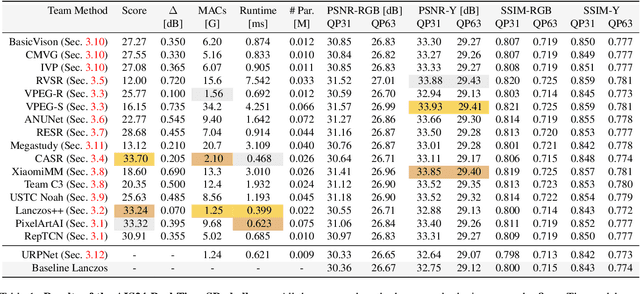

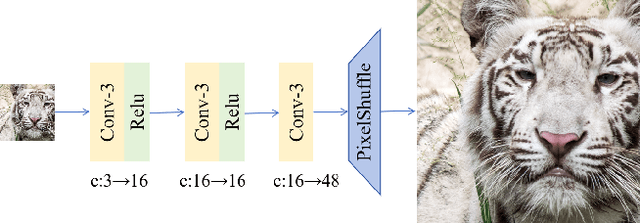
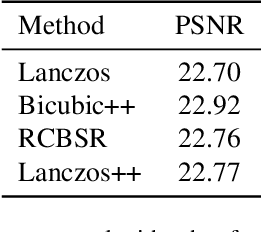
Abstract:This paper introduces a novel benchmark as part of the AIS 2024 Real-Time Image Super-Resolution (RTSR) Challenge, which aims to upscale compressed images from 540p to 4K resolution (4x factor) in real-time on commercial GPUs. For this, we use a diverse test set containing a variety of 4K images ranging from digital art to gaming and photography. The images are compressed using the modern AVIF codec, instead of JPEG. All the proposed methods improve PSNR fidelity over Lanczos interpolation, and process images under 10ms. Out of the 160 participants, 25 teams submitted their code and models. The solutions present novel designs tailored for memory-efficiency and runtime on edge devices. This survey describes the best solutions for real-time SR of compressed high-resolution images.
NTIRE 2024 Challenge on Low Light Image Enhancement: Methods and Results
Apr 22, 2024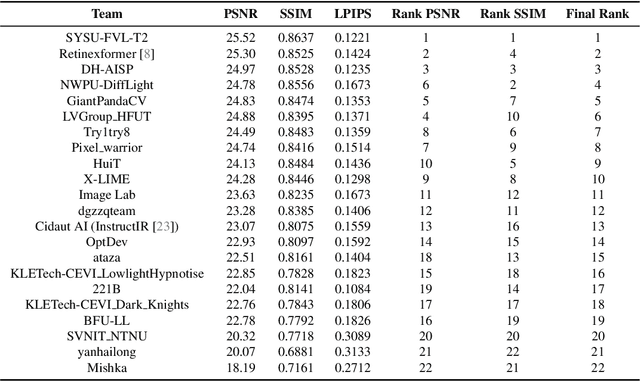

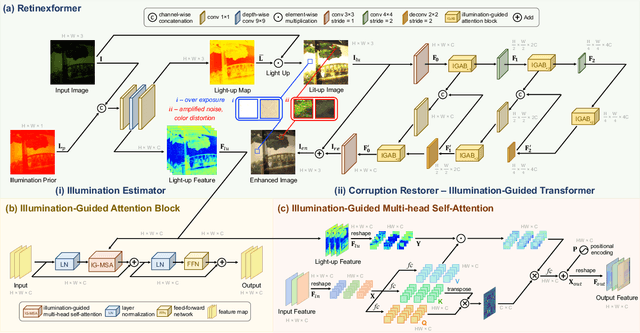

Abstract:This paper reviews the NTIRE 2024 low light image enhancement challenge, highlighting the proposed solutions and results. The aim of this challenge is to discover an effective network design or solution capable of generating brighter, clearer, and visually appealing results when dealing with a variety of conditions, including ultra-high resolution (4K and beyond), non-uniform illumination, backlighting, extreme darkness, and night scenes. A notable total of 428 participants registered for the challenge, with 22 teams ultimately making valid submissions. This paper meticulously evaluates the state-of-the-art advancements in enhancing low-light images, reflecting the significant progress and creativity in this field.
A multi-stage semi-supervised learning for ankle fracture classification on CT images
Mar 29, 2024Abstract:Because of the complicated mechanism of ankle injury, it is very difficult to diagnose ankle fracture in clinic. In order to simplify the process of fracture diagnosis, an automatic diagnosis model of ankle fracture was proposed. Firstly, a tibia-fibula segmentation network is proposed for the joint tibiofibular region of the ankle joint, and the corresponding segmentation dataset is established on the basis of fracture data. Secondly, the image registration method is used to register the bone segmentation mask with the normal bone mask. Finally, a semi-supervised classifier is constructed to make full use of a large number of unlabeled data to classify ankle fractures. Experiments show that the proposed method can segment fractures with fracture lines accurately and has better performance than the general method. At the same time, this method is superior to classification network in several indexes.
Dual Memory Networks: A Versatile Adaptation Approach for Vision-Language Models
Mar 26, 2024Abstract:With the emergence of pre-trained vision-language models like CLIP, how to adapt them to various downstream classification tasks has garnered significant attention in recent research. The adaptation strategies can be typically categorized into three paradigms: zero-shot adaptation, few-shot adaptation, and the recently-proposed training-free few-shot adaptation. Most existing approaches are tailored for a specific setting and can only cater to one or two of these paradigms. In this paper, we introduce a versatile adaptation approach that can effectively work under all three settings. Specifically, we propose the dual memory networks that comprise dynamic and static memory components. The static memory caches training data knowledge, enabling training-free few-shot adaptation, while the dynamic memory preserves historical test features online during the testing process, allowing for the exploration of additional data insights beyond the training set. This novel capability enhances model performance in the few-shot setting and enables model usability in the absence of training data. The two memory networks employ the same flexible memory interactive strategy, which can operate in a training-free mode and can be further enhanced by incorporating learnable projection layers. Our approach is tested across 11 datasets under the three task settings. Remarkably, in the zero-shot scenario, it outperforms existing methods by over 3\% and even shows superior results against methods utilizing external training data. Additionally, our method exhibits robust performance against natural distribution shifts. Codes are available at \url{https://github.com/YBZh/DMN}.
Dual-Decoder Consistency via Pseudo-Labels Guided Data Augmentation for Semi-Supervised Medical Image Segmentation
Aug 31, 2023Abstract:Medical image segmentation methods often rely on fully supervised approaches to achieve excellent performance, which is contingent upon having an extensive set of labeled images for training. However, annotating medical images is both expensive and time-consuming. Semi-supervised learning offers a solution by leveraging numerous unlabeled images alongside a limited set of annotated ones. In this paper, we introduce a semi-supervised medical image segmentation method based on the mean-teacher model, referred to as Dual-Decoder Consistency via Pseudo-Labels Guided Data Augmentation (DCPA). This method combines consistency regularization, pseudo-labels, and data augmentation to enhance the efficacy of semi-supervised segmentation. Firstly, the proposed model comprises both student and teacher models with a shared encoder and two distinct decoders employing different up-sampling strategies. Minimizing the output discrepancy between decoders enforces the generation of consistent representations, serving as regularization during student model training. Secondly, we introduce mixup operations to blend unlabeled data with labeled data, creating mixed data and thereby achieving data augmentation. Lastly, pseudo-labels are generated by the teacher model and utilized as labels for mixed data to compute unsupervised loss. We compare the segmentation results of the DCPA model with six state-of-the-art semi-supervised methods on three publicly available medical datasets. Beyond classical 10\% and 20\% semi-supervised settings, we investigate performance with less supervision (5\% labeled data). Experimental outcomes demonstrate that our approach consistently outperforms existing semi-supervised medical image segmentation methods across the three semi-supervised settings.
Exploring Inductive Biases in Contrastive Learning: A Clustering Perspective
May 17, 2023Abstract:This paper investigates the differences in data organization between contrastive and supervised learning methods, focusing on the concept of locally dense clusters. We introduce a novel metric, Relative Local Density (RLD), to quantitatively measure local density within clusters. Visual examples are provided to highlight the distinctions between locally dense clusters and globally dense ones. By comparing the clusters formed by contrastive and supervised learning, we reveal that contrastive learning generates locally dense clusters without global density, while supervised learning creates clusters with both local and global density. We further explore the use of a Graph Convolutional Network (GCN) classifier as an alternative to linear classifiers for handling locally dense clusters. Finally, we utilize t-SNE visualizations to substantiate the differences between the features generated by contrastive and supervised learning methods. We conclude by proposing future research directions, including the development of efficient classifiers tailored to contrastive learning and the creation of innovative augmentation algorithms.
 Add to Chrome
Add to Chrome Add to Firefox
Add to Firefox Add to Edge
Add to Edge